|
|
|
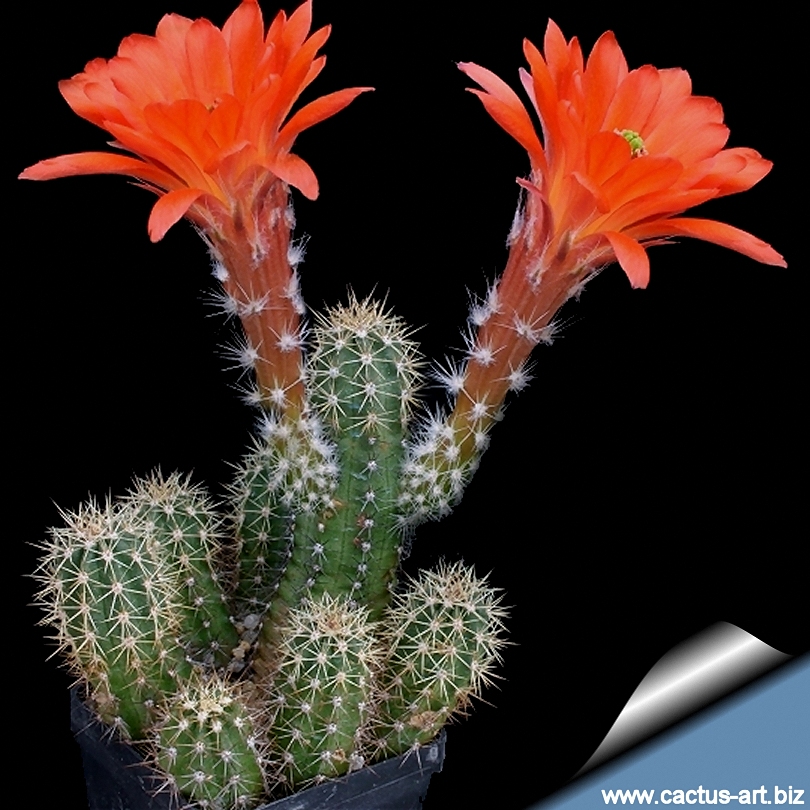
E. scheeri var. koehresii TL: Lau
1143 (Mexico, Durango, between El Carrizo & Loberas)
Tiny spines on finger length upright stems. Flowers
well
|
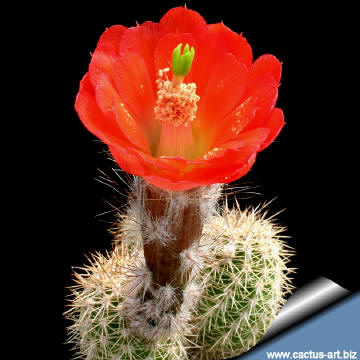 |
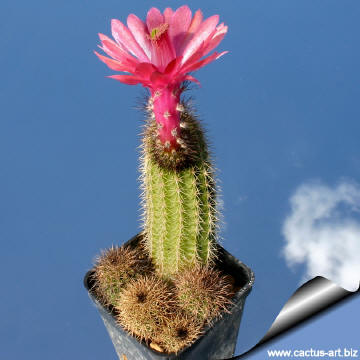 |
|
. |
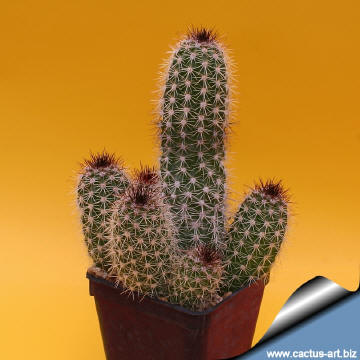 |
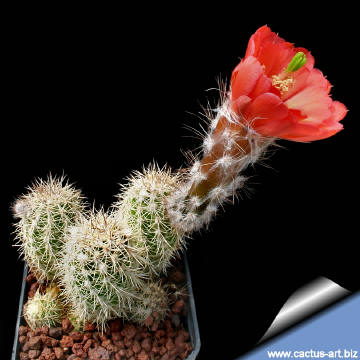 |
|
Photo of conspecific taxa, varieties, forms and
cultivars of Echinocereus scheerii.
Advertising
|
|
|
|
|
|
|
Family:
Cactaceae
(Cactus
Family)
Scientific name: Echinocereus
scheeri var.
koehresianus Frank 1988
TL: Mexico, Sinaloa ,Durango,
between El Carrizo & Loberas, Lau 1143 (ZSS).
Synonims:
- Echinocereus ortegae fa. koehresianus
Parker 1996 nom. nud. Echinocereus ortegae Rose ex
J.G.Ortega 1929
- Echinocereus pacificus
Haage 1892 nom.nud.
- Echinocereus ortegae ssp. koehresianus
(Frank) Rischer
& Frank 1996
- Echinocereus scheeri var. australis
Taylor 1988
- Echinocereus koehresii Hort. ex
Taylor 1988
- Echinocereus koehresianus Hort.
ex Taylor 1988
Note: Taylor (1993) lists this variety as a
synonym of Eocereus ortegae.
|
|
Description: Clump forming
intensely spiny columnar cactus sometime creeping, with finger sized
stems that branch profusely from the base. It has a whitish appearance
due to spine colour.
Stems: 10-40 cm tall and 2.5 to
4 cm in diameter, upright cylindrical, yellowish-green to dark
green.
Ribs: 7 to 16 low
Areoles: Small 2-3 mm apart.
Radial spines: 10 or more, short, the young spines are yellowish
but turns whitish rapidly
Central spines: 3 to 4 (to 6) Yellowish to dark reddish turning
whitish soon.
Flowers: Funnelform on the
sides of the stems, 6-10 cm long, huge colourful bright
orange-red, with long hairy tube. 9 green stigmas.
|
|
|
|
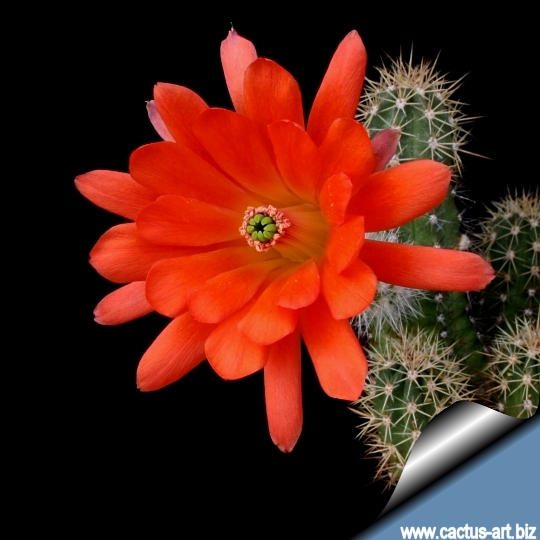
Magnificent orange-red tubular flowers.. |
|
Cultivation: In culture E.
scherii is without
problems, easy to grow, very attractive and regularly shows its
beautiful flowers, if provided
with an adequate winter rest period. It is
sensitive to over-watering (rot prone),
and needs good drainage. Keep
drier and cool in winter. Needs
full sun. In
the summer they need an airy location in bright sun; well watered when
it's hot. To achieve the best spine density
give these plants lots of sun. In the winter
light, cool, and absolutely dry conditions.
Very cold resistant above -12° C or less for short periods of
time.
In mild climate they grow well when planted freely outside
in well-drained soil.
Propagation: Seeds
(usually), it also can be grown from cuttings, as it can branch from the
base.

 |
|